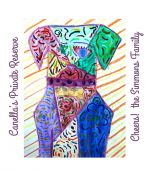
By Ben Hilzinger
In many ways, wine is an investment and unlike numerous other drink choices, you rarely know exactly what to expect. In terms of enjoyment, there’s always the risk of surprise, whether good or bad, in buying a new bottle. But, thats the exciting part about this whole obsession with the magic juice we call wine! When something interferes with that experience, however, it’s an immense letdown and the subject of today’s discussion…corked bottles. Some studies show an average of corkage as high as 7%. In small batches this might not seem too alarming, but if you are a winery producing hundreds of thousands of bottles a year, this can mean A LOT of wine going down the drain. Here at Northwest Cellars, we use Winery Grade Corks (which I’ll describe later) and take extreme pride in numbers as low as 1%.
What is a corked bottle? To me, the smell of cork taint resembles an old, dusty attic with a leak in the roof and mold growing in a couple of dark corners. Others describe it as a wet dog or damp, used towel. Unless you’re a secret masochist of the palate, these undertones should sound unappealing. A lot of people think corked wine simply means a fragile/ruined cork or bits of floating cork found in your glass of Chardonnay. To get the geeky science out of the way, Mary Gorman-McAdams, MW (Master of WIne) explains corked wine as “…a term for a wine that has become contaminated with cork taint…it is caused by the presence of a chemical compound called TCA (2,4,6 – trichloroanisole). TCA is formed when natural fungi (of which many reside in cork) come in contact with certain chlorides found in bleaches and other winery sanitation / sterilization products.” TCA can also be found in barrels and other sources of wood during the winemaking process. Basically, bad stuff gets in and stays in, taking over the fruit notes and adding an overall harshness to the wine.
If these little pieces of wood are so prone to failure then why in the heck do we still use them?! Even to this day, the cork is an ideal structure for allowing the perfect amount of air (oxygen) to come in contact with the wine to aid in maturation. Its organic compressibility and elasticity let it adapt to any bottle curvature and literally move and shift WITH the bottle over time. It ultimately becomes just as part of the bottle as the glass. The wine industry has been battling this evil enemy very aggressively in recent years. Walk down the wine aisle of any store and you’ll most likely see one of every attempt to hassle this foe. The main different types of corks (and their alternatives) are as following:
First Quality Corks: A standard cork cutout meant for medium storage times or an average of up 5 years.
Premium Corks: Think of this as a composite cork with little bits of piece compressed together to form a final product. Less air is allowed through, so it is preferred for longer storage times than First Quality Corks.
Winery Grade Corks: Extremely dense cork, the most expensive.
Synthetic Corks: Made to look and “sound” like real corks, but consist of plastic materials. Although not biodegradable, they’re recyclable and do not allow the transfer of TCA.
Agglomertate Corks: A mixture of real cork and synthetics. Overall, a debatably ideal choice for storing wine long term.
Screw Caps (Stelvin Caps): Literally a cap you screw off. Views on this alternative are growing favor, but its popularity is slow-building as the consumer still associates it with cheap, low-quality wines.
Zork: Consisting of three parts, a wrap-around plastic “coil”, a screwcap-like topper, and an inner plunger that pops like a cork. Introduced in 2010, this method has gained the least ground, although it seems sound on paper. The Zork is pictured below.

Luckily, I haven’t heard of any winery or wine shop refusing an exchange or refund on corked bottles. It’s an inevitable fact of life and, although many measures have been taken to reduce this occurrence, the beast will always remain. Don’t be afraid, there are even home remedies to eliminate the flavor of corked wine such as pouring the bottle into a bowl lined with polyethylene and waiting five minutes. The TCA sticks to the plastic and leaves the wine unscathed once pouring into your glass. Try it out! Science rules. Thanks for reading and drink with confidence. Drink Northwest Cellars.












0 Comments